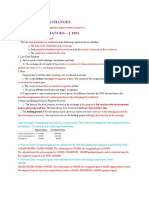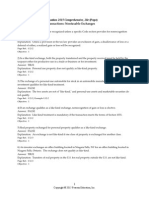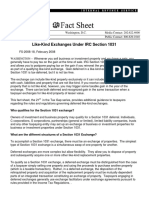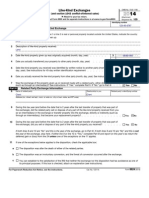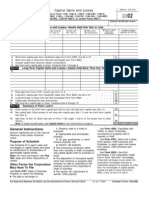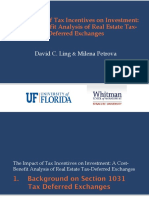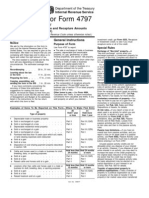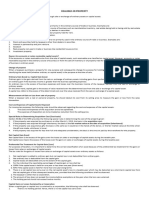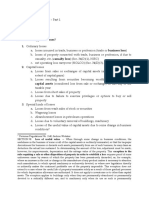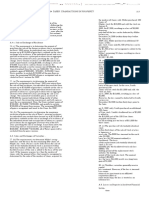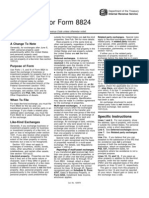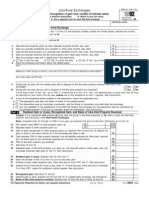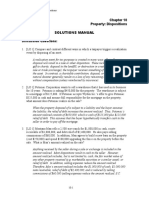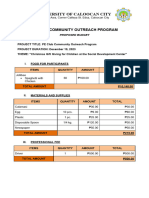0% found this document useful (0 votes)
185 views2 pagesChapter 8 (Pages 272-Top of 288) Tax-Deferred Exchanges
This section discusses tax-deferred exchanges and involuntary conversions. [1] Like-kind exchanges allow the deferral of capital gains tax when real estate or other business property is exchanged for similar property. Cash received in the exchange is taxed. [2] Involuntary conversions through theft, casualty, or condemnation may be deferred through timely replacement of the property. Losses are deducted immediately but gains can be deferred. [3] There are specific time limits and rules regarding the replacement property that must be followed to qualify for deferral of capital gains tax.
Uploaded by
rmarmer1Copyright
© Attribution Non-Commercial (BY-NC)
We take content rights seriously. If you suspect this is your content, claim it here.
Available Formats
Download as PDF, TXT or read online on Scribd
0% found this document useful (0 votes)
185 views2 pagesChapter 8 (Pages 272-Top of 288) Tax-Deferred Exchanges
This section discusses tax-deferred exchanges and involuntary conversions. [1] Like-kind exchanges allow the deferral of capital gains tax when real estate or other business property is exchanged for similar property. Cash received in the exchange is taxed. [2] Involuntary conversions through theft, casualty, or condemnation may be deferred through timely replacement of the property. Losses are deducted immediately but gains can be deferred. [3] There are specific time limits and rules regarding the replacement property that must be followed to qualify for deferral of capital gains tax.
Uploaded by
rmarmer1Copyright
© Attribution Non-Commercial (BY-NC)
We take content rights seriously. If you suspect this is your content, claim it here.
Available Formats
Download as PDF, TXT or read online on Scribd
/ 2




